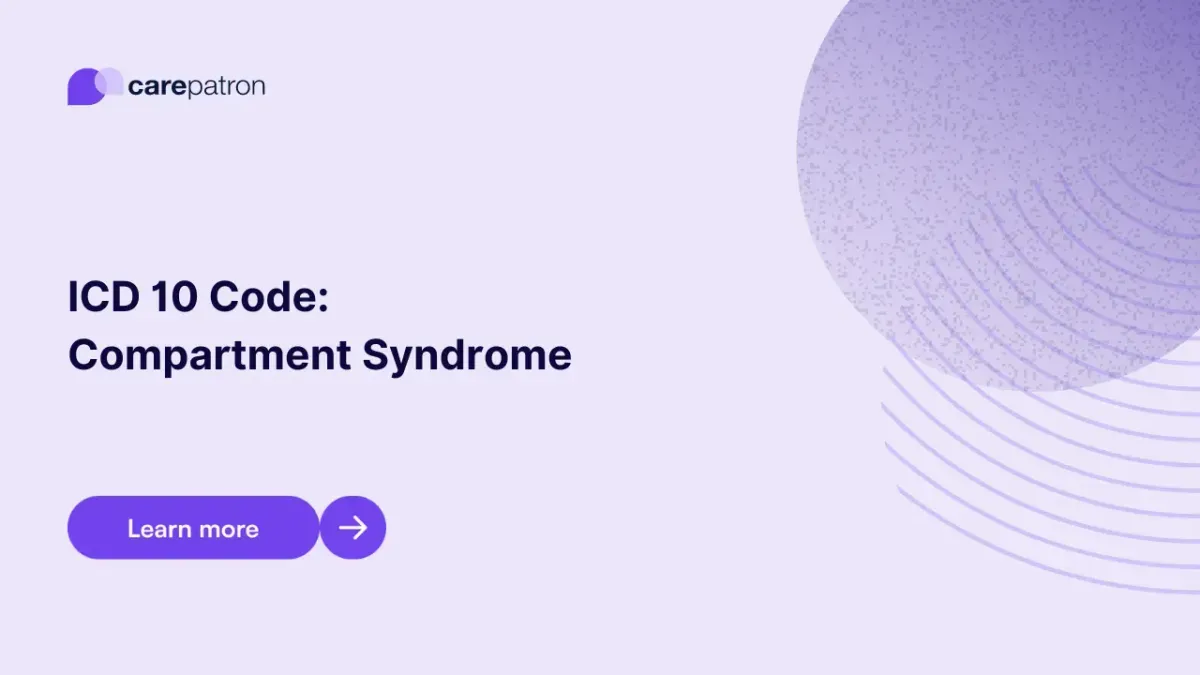
Compartment Syndrome ICD-10-CM Codes
Read this short guide and learn about compartment syndrome ICD codes you can use.
Use Code
Commonly asked questions
Yes. There are a lot more compartment syndrome ICD codes.
Healthcare professionals will conduct physical examinations and pressure tests. They may also use X-rays or other imaging tests to check for fractures or traumatic injuries, just in case.
That depends on how serious it is. If it’s chronic/non-traumatic, treatment can involve adjusting exercises to something light, taking anti-inflammatory medicine, and taking physical therapy. If it’s acute/traumatic, healthcare professionals will likely resort to surgery to relieve the muscles from pressure.
EHR and practice management software
Get started for free
*No credit card required
Free
$0/usd
Unlimited clients
Telehealth
1GB of storage
Client portal text
Automated billing and online payments
